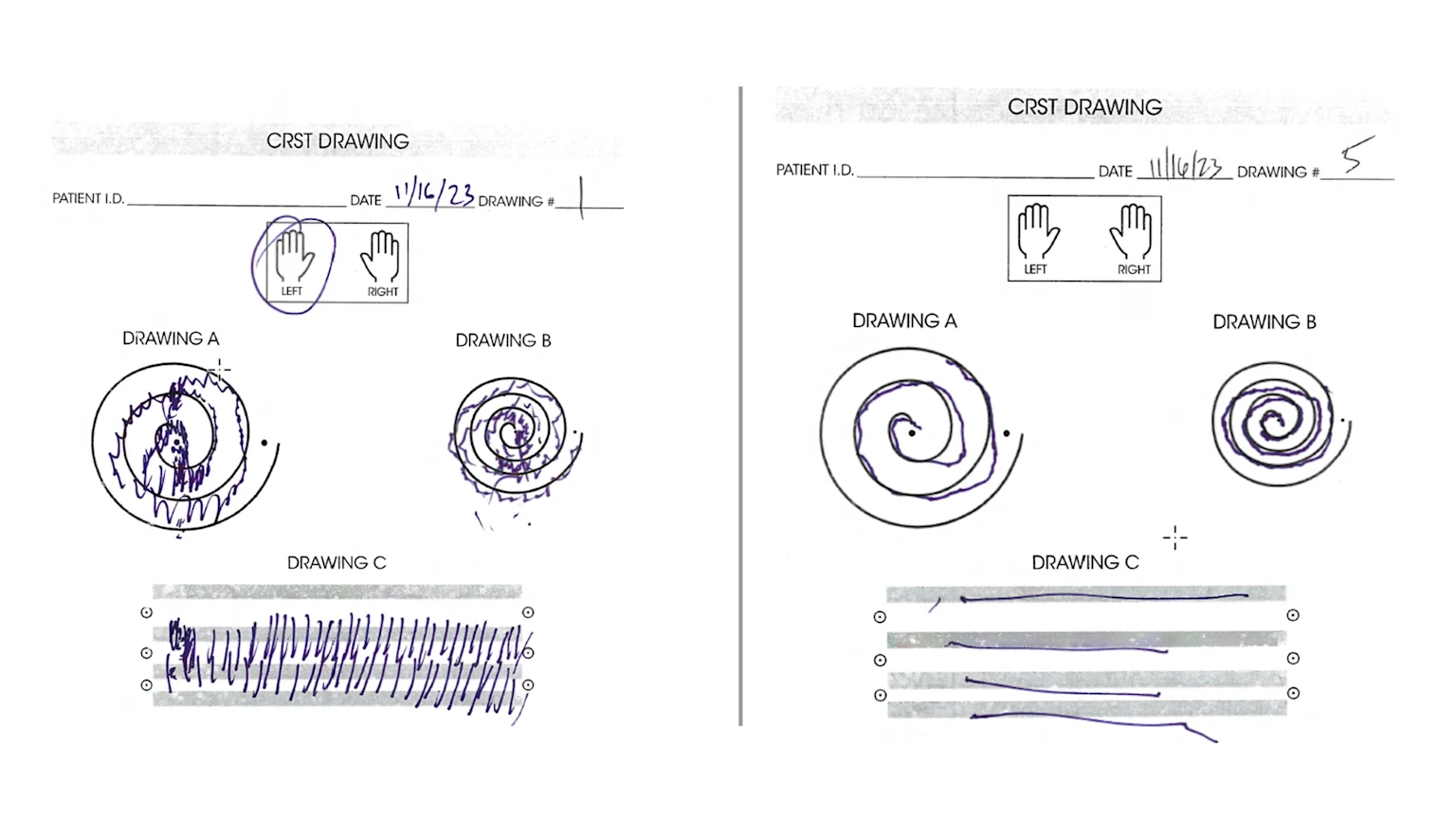
5 ways health care workers steer clear of the flu
Learn about the tricks health care workers use to stay healthy during flu season.
Dr. Vamsi Chavakula explains focused ultrasound treatment.
Imagine you can’t write your loved one a birthday card, sign your own name, or even lift a cup of water or bite of food to your mouth without spilling. While we take these everyday actions for granted, those who live with essential tremor and Parkinson’s disease know that the uncontrollable shaking caused by these conditions can make otherwise routine tasks difficult or even impossible.
Fortunately, for patients whose shaking cannot be controlled with medicine, Sharp Grossmont Hospital now offers ground-breaking technology called MR-guided focused ultrasound to treat tremors caused by Parkinson’s and essential tremor — two conditions also known as movement disorders.
Sharp Grossmont is proud to be the only provider in San Diego County to offer this groundbreaking treatment, which has shown to greatly improve a patient’s quality of life.
Some key benefits of focused ultrasound include:
A one-time outpatient procedure, usually lasting between 90 minutes to 2 hours, after which patients can normally go home the same day
Safe and minimally-invasive, with no incision — providing a low risk of infection
No anesthesia involved
Improvements usually seen immediately
How does it work?
MR-guided focused ultrasound uses ultrasound waves, guided by magnetic resonance imaging (MRI) to pinpoint the specific part of the brain that is causing the tremor and treat it. The procedure is performed inside of an MRI scanner, and the patient is awake the entire time. The precision of MRI technology allows the neurosurgeon to see exactly where the treatment is going, targeting the affected areas of the brain causing tremors.
“We use ultrasound waves that pass through cool water, which circulates in a helmet around your head, then painlessly and safely to the center of your brain,” says Dr. Vamsi Chavakula, director of functional neurosurgery at Sharp Grossmont and the neurosurgeon who performs the procedure. “A small amount of energy generates enough heat to make a pea-sized lesion on your brain, which disrupts the abnormal circuit causing your tremor without damaging the surrounding healthy tissue.”
A joint effort between doctor and patient
Dr. Chavakula says being able to control how the procedure is progressing and communicate with the patient in real time is one of the best parts of the technology.
“I can stay in touch with the patient and by communicating with them, evaluate if their tremor is improving in the midst of performing the procedure,” says Dr. Chavakula. “In reality, the patient is helping me help them.”
The often immediate improvement is one of the biggest benefits of focused ultrasound. Patients perform a drawing test before and after the treatment. What may have been a squiggly mess drawn beforehand can often be seen as a nearly straight line after just the first application of energy or by the end of the treatment. Dr. Chavakula says some of his patients haven’t seen their own handwriting in more than 20 years and realize they’ll have many other parts of their life back too.
“They’re excited because for the first time in years, they can go to dinner and out to social settings and not be afraid of spilling cups of water or dropping their food," he says. "It’s often an overwhelming and emotional experience for them.”

Results of a drawing test for a patient with Parkinson’s. (Left) Before focused ultrasound. (Right) Immediately after.
Who is a candidate for MR-guided focused ultrasound?
If you have been diagnosed with essential tremor or tremor-dominant Parkinson’s disease, focused ultrasound technology may be the answer to controlling your tremors. Other requirements can include:
Your tremor cannot be controlled with medication, or you can’t control the medication’s side effects.
Basic tasks, such as eating, writing or getting dressed, have become difficult.
Your health is generally good, and you have no serious conditions, such as heart or lung disease.
You have no conditions or implants that prevent you from being inside an MRI scanner.
You can remain still for the entire procedure (90 minutes to 2 hours).
Sharp Grossmont Hospital for Neuroscience coming in 2025
The launch of focused ultrasound and the movement disorders program is just part of what Sharp Grossmont will offer to patients in need of advanced neurosurgical, neurological and comprehensive spine care — all under one roof. With the help of philanthropic partners, including a generous $4 million matching grant from the Grossmont Healthcare District, Sharp Grossmont is in the construction phase of building its Sharp Grossmont Hospital for Neuroscience, set to open in January 2025.
Marguerite Paradis, BSN, RN, is the assistant chief nursing officer and Neuroscience Director at Sharp Grossmont. She’s proud the hospital can now provide patients with these new options and is excited about what is yet to come.
“We’re working to add even more to our menu of these technologically advanced treatments for those seeking the best in specialized neurological care,” says Paradis. “We can’t wait to open our doors.”
Learn more about focused ultrasound at Sharp; get the latest health and wellness news, trends and patient stories from Sharp Health News; and subscribe to our weekly newsletter by clicking the "Sign up" link below.

Our weekly email brings you the latest health tips, recipes and stories.